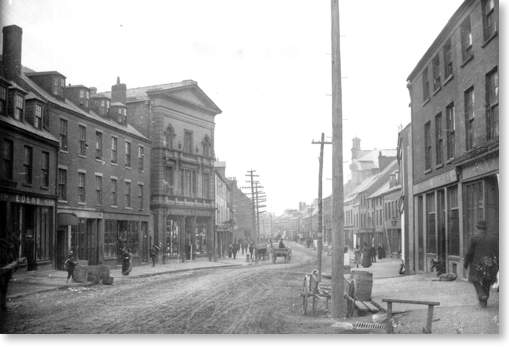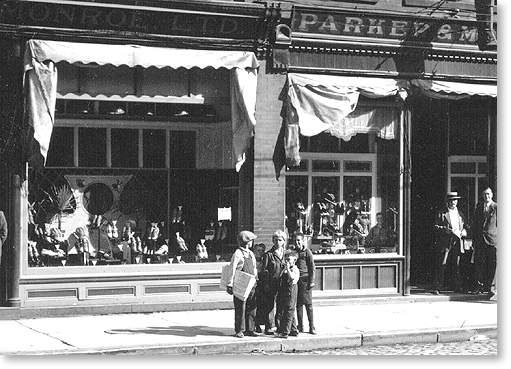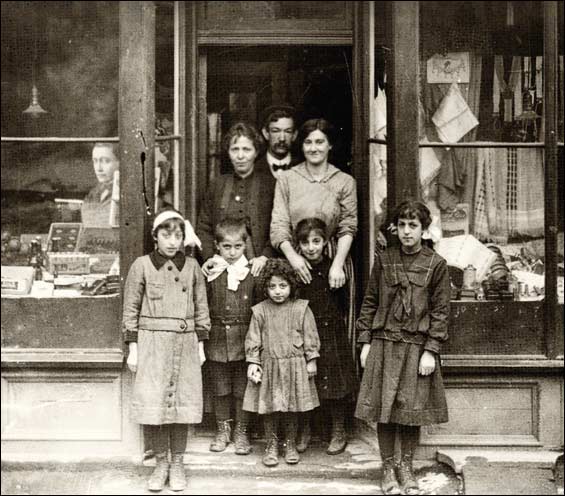Women Shop Workers, Water and Duckworth Streets
21. Go left down Church Hill toward the harbour, cross Duckworth Street, and turn right. Walk down the steep McBride's Hill to Water Street, the retail hub of downtown.
Many working-class women contributed to the family income by working in the shops that dotted Water and Duckworth Streets during the early 20th century. Dry goods, millinery, grocery and drapery stores, and large multi-purpose stores such as Ayres or Bowrings sought young, single, female workers.

In the late 1800s and early 1900s work options for women were few, and being a shop clerk was generally seen as less demanding and less dirty work than factory or fish plant labour. Sales work was largely unskilled so was open to a wider range of women, but this work paid low wages. In 1921, over 400 women worked in sales, not counting those employed in smaller grocery and confectionary stores in the city. It continued to be important work for many women over the 20th century.

Not all shops were owned by English or Irish Newfoundlanders. Other immigrants to the Newfoundland established many businesses between 1890 and 1950. The Lebanese community, in particular, built and ran businesses of all sorts: dry goods stores, confectionary and fruit shops, and variety and jewellery stores. They employed family members and local women.

In 1938, the Newfoundland Protective Association of Shop and Office Employees was formed. Forty per cent of the membership were women, and the first Vice-President was Amelia Fogwill. Shop and Office employees marched in the Labour Day Parade in downtown St. John's that year, joining more than twenty other unions.
Many young working women lived at home with family or in boarding houses, so their lower incomes would have left little money for personal spending. Work for women was considered an interim stage between childhood and marriage as most women gave up their paid labour when they married, in line with the conventions of the day.




